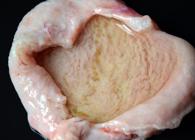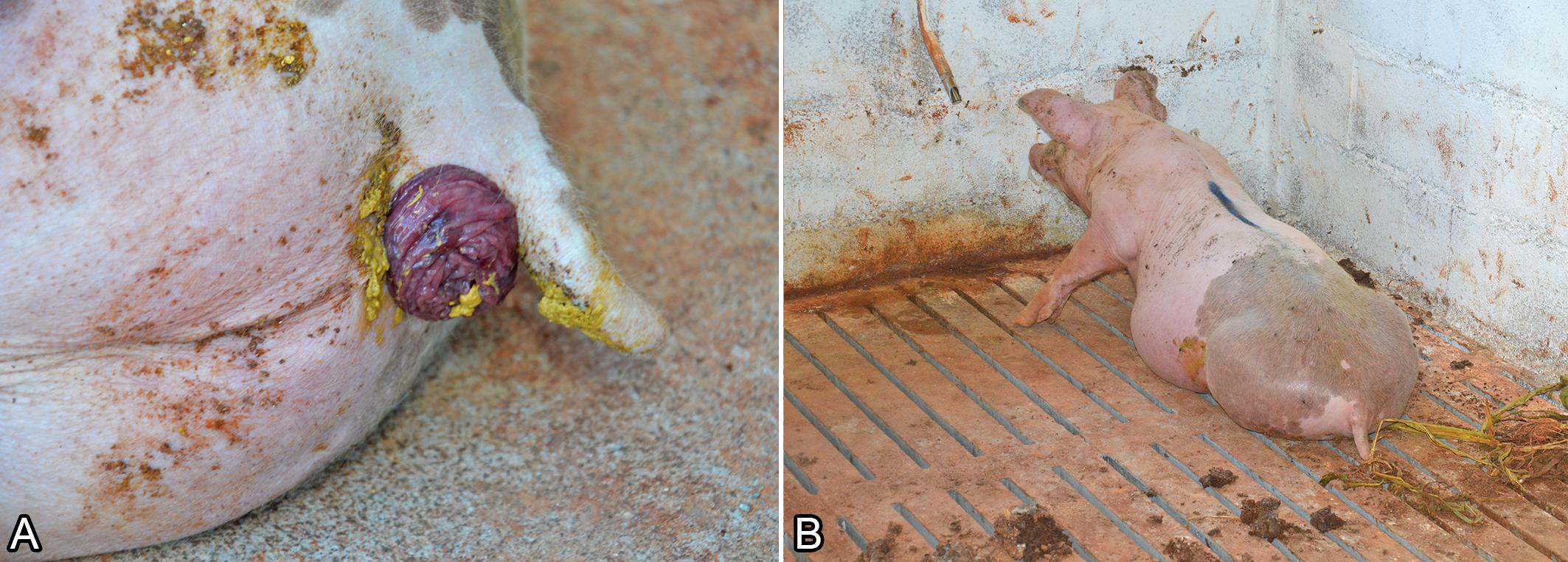ABSTRACT:
Obstructive urolithiasis is a disease characterized by the presence of uroliths in the urinary tract, with consequent obstruction of excretion pathways. This paper described the epidemiological and clinical-pathological findings of 22 outbreaks of urolithiasis in growing-finishing pigs in Southern Brazil. All affected pigs were male and clinical presentation consisted of lethargy, dysuria, rectal prolapse, abdominal distention, peripheral cyanosis and reluctance to move. Clinical progression course ranged from 12 hours to one week, and the lethality rate was 100%. Gross changes were characterized by urinary bladder rupture associated with marked amount of yellowish liquid with ammoniacal odor (urine) in the abdominal cavity (uroperitoneum), as well as mild fibrin deposition on the surface of abdominal organs and hydronephrosis. Urinary uroliths ranging from 0.3 to 1cm in diameter were often observed obstructing the lumen of the penile urethra and sometimes those were free in the abdominal cavity. Histopathological findings included diffuse and marked urinary bladder edema and hemorrhage associated with inflammatory infiltrate of lymphocytes, plasma cells, and macrophages. Diffuse and marked necrosis of the mucosal epithelium was observed in the penile urethra. Intense fibrin deposition and inflammatory infiltrate of neutrophils were noted in the peritoneum, as well as in the serosa of the organs in the abdominal cavity. Uroliths were submitted to the method of qualitative determination of the mineral components, and were compatible with calcium carbonate and magnesium ammonium phosphate. Growing pigs ration analysis revealed low levels of calcium in relation to phosphorus, resulting in a Ca:P ratio of approximately 0.35:1. Histological findings and mineral analysis suggest that outbreaks of urolithiasis were related to a nutritional imbalance in the proportions of dietary calcium and phosphorus. The main cause of mortality was related to dehydration and uroperitoneum.
INDEX TERMS:
Swine; urinary system; uroliths; uroperitoneum; mineral imbalance; calcium; phosphorus

 Thumbnail
Thumbnail
 Thumbnail
Thumbnail
 Thumbnail
Thumbnail
 Thumbnail
Thumbnail



